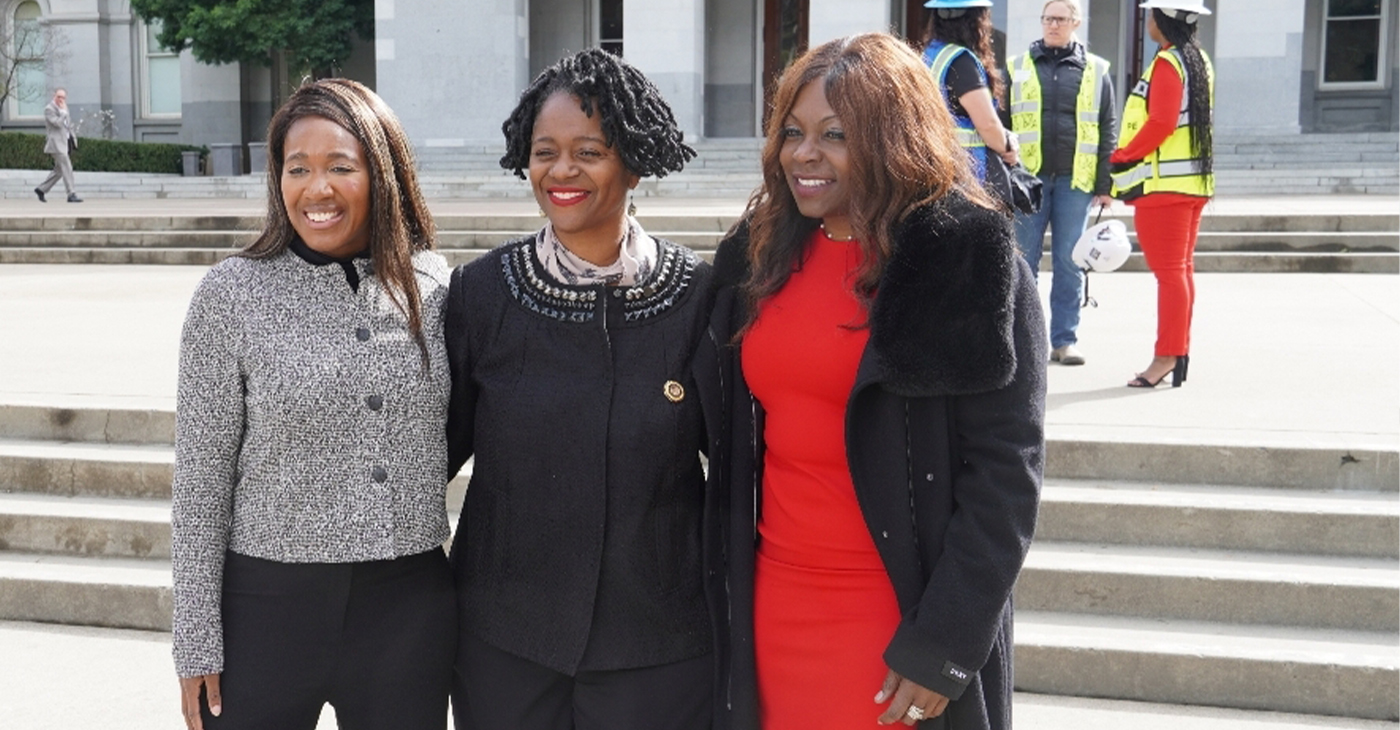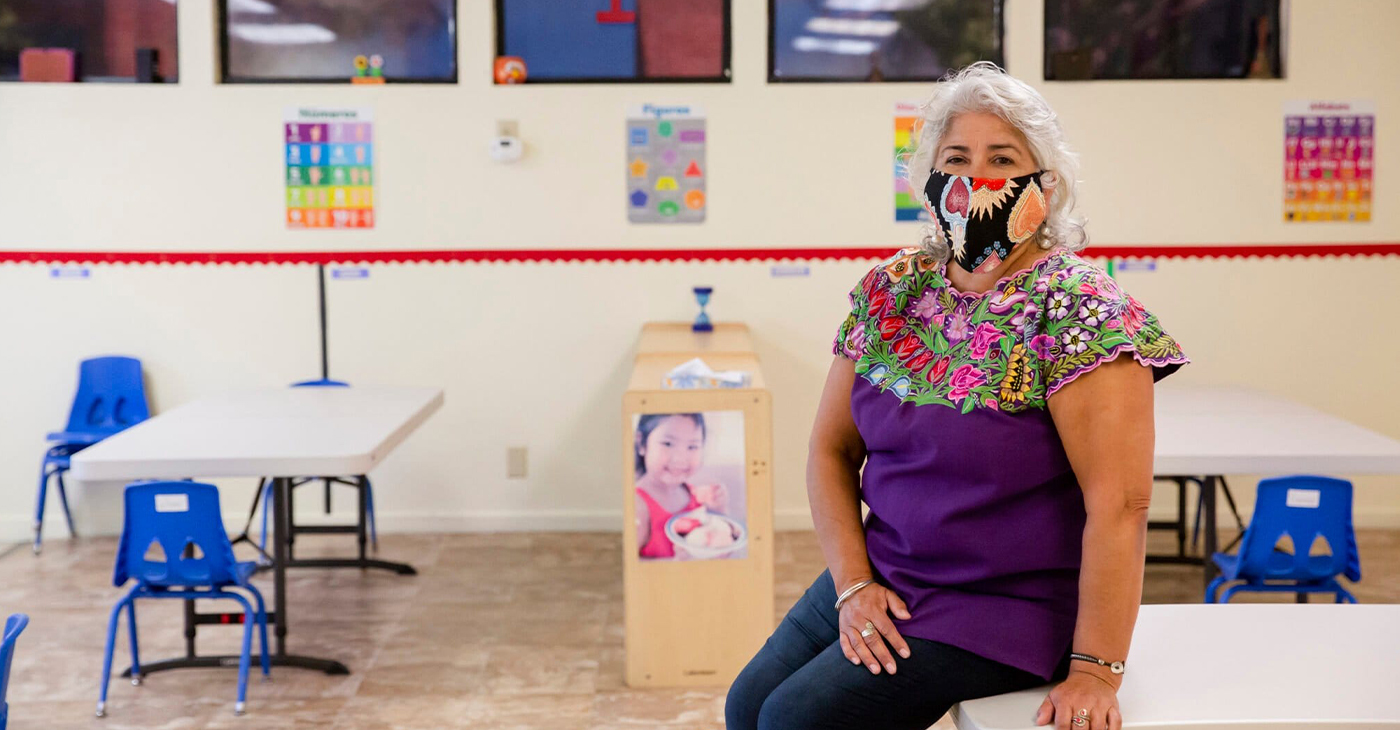Government
HABD announces public safety measures at Marks Village
THE BIRMINGHAM TIMES — Michael Lundy, CEO of The Housing Authority of the Birmingham District (HABD), last week announced the closure of 12 of 19 entry points into Marks Village Public Housing Community to reduce ways for perpetrators to escape the site as well as help better monitor who is going in and out of the community.
By Ameera Steward
Michael Lundy, CEO of The Housing Authority of the Birmingham District (HABD), last week announced the closure of 12 of 19 entry points into Marks Village Public Housing Community to reduce ways for perpetrators to escape the site as well as help better monitor who is going in and out of the community.
Lundy was joined at a public safety forum by Jefferson County Sheriff Mark Pettway, Birmingham Chief of Police Patrick Smith, Presiding Judge of Birmingham Municipal Court Andra Sparks and other elected officials such as Jefferson County Commissioner Lashunda Scales.
Lundy spoke a week after Birmingham city councilors asked tough questions about what the housing authority was doing to protect residents at Marks Village in the Gate City Community after two people were hurt in a recent shooting. Councilor Steven Hoyt criticized the housing authority for not acting on the council’s request to close roads more than a year ago.
“Putting the barriers at these 12 streets will not eliminate all the crime, it’s a good first step,” said Lundy, who added that his team has been working with the Birmingham police department and Mayor Woodfin to develop safety measures at Marks Village.
HABD is prepared to close some of those entry points as soon as this month. The barricades will not be a continuous fence but still give residents the ability to walk freely back and forth from the site. The barriers will be approximately three feet tall and will have shrubbery that will make it more aesthetically pleasing.
HABD anticipates the installation will take approximately two weeks.
The Alabama Department of Transportation has provided HABD with 60 concrete barriers which will be placed in various locations around the housing community.
Lundy said the barriers aren’t meant to “fence in” residents and he’s heard support for the safety measures.
When housing officials asked how many supported the closing of the streets during a previous meeting, “every hand in the house went up,” he said, “the thing that touched me most, there was a kid who was about 8 or 9 years of age….and he didn’t only raise his left hand, he raised his right hand, he raised both of his hands.”
Cory Stallworth, Vice President of Real Estate Development & Capital Improvement at HABD, said (a) third-party security company provided advice on some roads that could be closed to make the site more [accessible] but also limit unwanted vehicles and activities.
“We developed this plan in consultation with the residents…and the surrounding stakeholders, and so we met with Birmingham Police Department to get advice on our road closures as well as Birmingham Fire & Rescue to make sure that the site is still accessible for emergency responders,” said Stallworth.
Most of the closed entryways will consist of alleyways that are owned by HABD and are typically not high traffic roads “and so they don’t need to be open to [the] larger community. They’re very narrow and you can’t get two cars down there at the same time in the opposite direction,” Stallworth said.
Additionally, the HABD met with the Birmingham City Schools to talk about the bus route throughout the site.
“We wanted to make sure they still had accessibility to get the buses in and out of the site. We met with the MAX transportation system, they actually relocated their bus routes from the interior of the site to the exterior of the site along Kimberly,” said Stallworth.
The next steps include putting out signs to let the larger community know that some streets will be closing.
“Once we place those barriers in place, we’ll have signs that will probably read ‘no outlet’ on each one of the road closures as well as the barriers will be highly reflective so that they can be seen at night,” Stallworth said.
Law Enforcement Support
Pettway said there will be no obstacles between the different agencies working to protect residents.
“If something happens, we will respond and we will take care of it on the spot,” he said. “I have a captain who is ready to take any call from anybody…in Marks Village. I have a sergeant who’s ready to make sure that you get top notch service right here.”
Smith said his department is working to stem violence and take guns off the streets but wants residents to help as well. “And I need everyone to stand up. So, if you see something be sure to say something, let us know what’s happening because we can’t do it alone,” he said.
Sparks said he believes the municipal court can also find ways to help. “The remedy is not jail, the remedy is in supporting people when they make bad choices and helping them make better choices,” he said.
Christine Wynn, a resident of Marks Village for 10 years, said she was pleased to see the safety measures.
“I’m thinking we all [are going to] come together as a family,” she said. “We’re going to bridge that gap…and start working together like neighborhood watch.”
This article originally appeared in The Birmingham Times.
Activism
Oakland Post: Week of March 28 – April 1, 2025
The printed Weekly Edition of the Oakland Post: Week of March 28 – April 1, 2025

To enlarge your view of this issue, use the slider, magnifying glass icon or full page icon in the lower right corner of the browser window.
Activism
Sen. Lola Smallwood-Cuevas Honors California Women in Construction with State Proclamation, Policy Ideas
“Women play an important role in building our communities, yet they remain vastly underrepresented in the construction industry,” Smallwood-Cuevas stated. “This resolution not only recognizes their incredible contributions but also the need to break barriers — like gender discrimination.

By Antonio Ray Harvey, California Black Media
To honor Women in Construction Week, Sen. Lola Smallwood-Cuevas (D-Los Angeles), a member of the California Legislative Black Caucus (CLBC), introduced Senate Concurrent Resolution (SCR) 30 in the State Legislature on March 6. This resolution pays tribute to women and highlights their contributions to the building industry.
The measure designates March 2, 2025, to March 8, 2025, as Women in Construction Week in California. It passed 34-0 on the Senate floor.
“Women play an important role in building our communities, yet they remain vastly underrepresented in the construction industry,” Smallwood-Cuevas stated. “This resolution not only recognizes their incredible contributions but also the need to break barriers — like gender discrimination.
Authored by Assemblymember Liz Ortega (D-San Leandro), another bill, Assembly Concurrent Resolution (ACR) 28, also recognized women in the construction industry.
The resolution advanced out of the Assembly Committee on Rules with a 10-0 vote.
The weeklong event coincides with the National Association of Women In Construction (NAWIC) celebration that started in 1998 and has grown and expanded every year since.
The same week in front of the State Capitol, Smallwood, Lt. Gov. Eleni Kounalakis, Assemblymember Josh Hoover (R-Folsom), and Assemblymember Maggie Krell (D-Sacramento), attended a brunch organized by a local chapter of NAWIC.
Two of the guest speakers were Dr. Giovanna Brasfield, CEO of Los Angeles-based Brasfield and Associates, and Jennifer Todd, President and Founder of LMS General Contractors.
Todd is the youngest Black woman to receive a California’s Contractors State License Board (A) General Engineering license. An advocate for women of different backgrounds, Todd she said she has been a woman in construction for the last 16 years despite going through some trying times.
A graduate of Arizona State University’s’ Sandra Day O’Connor College of Law, in 2009 Todd created an apprenticeship training program, A Greener Tomorrow, designed toward the advancement of unemployed and underemployed people of color.
“I always say, ‘I love an industry that doesn’t love me back,’” Todd said. “Being young, female and minority, I am often in spaces where people don’t look like me, they don’t reflect my values, they don’t reflect my experiences, and I so persevere in spite of it all.”
According to the U.S. Bureau of Labor Statistics, only 11.2% of the construction workforce across the country are female. Overall, 87.3% of the female construction workers are White, 35.1% are Latinas, 2.1% are Asians, and 6.5% are Black women, the report reveals.
The National Association of Home Builders reported that as of 2022, the states with the largest number of women working in construction were Texas (137,000), California (135,000) and Florida (119,000). The three states alone represent 30% of all women employed in the industry.
Sen. Susan Rubio (D-Baldwin Park) and the California Legislative Women’s Caucus supported Smallwood-Cuevas’ SCR 30 and requested that more energy be poured into bringing awareness to the severe gender gap in the construction field.
“The construction trade are a proven path to a solid career. and we have an ongoing shortage, and this is a time for us to do better breaking down the barriers to help the people get into this sector,” Rubio said.
Bay Area
Five Years After COVID-19 Began, a Struggling Child Care Workforce Faces New Threats
Five years ago, as COVID-19 lockdowns and school closures began, most early educators continued to work in person, risking their own health and that of their families. “Early educators were called essential, but they weren’t provided with the personal protective equipment they needed to stay safe,” said CSCCE Executive Director Lea Austin. “There were no special shopping hours or ways for them to access safety materials in those early and scary months of the pandemic, leaving them to compete with other shoppers. One state even advised them to wear trash bags if they couldn’t find PPE.”

UC Berkeley News
In the first eight months of the COVID-19 pandemic alone, 166,000 childcare jobs were lost across the nation. Significant recovery didn’t begin until the advent of American Rescue Plan Act (ARPA) Child Care Stabilization funds in April 2021.
Today, child care employment is back to slightly above pre-pandemic levels, but job growth has remained sluggish at 1.4% since ARPA funding allocations ended in October 2023, according to analysis by the Center for the Study of Child Care Employment (CSCCE) at UC Berkeley. In the last six months, childcare employment has hovered around 1.1 million.
Yet more than two million American parents report job changes due to problems accessing child care. Why does the childcare sector continue to face a workforce crisis that has predated the pandemic? Inadequate compensation drives high turnover rates and workforce shortages that predate the pandemic. Early childhood educators are skilled professionals; many have more than 15 years of experience and a college degree, but their compensation does not reflect their expertise. The national median hourly wage is $13.07, and only a small proportion of early educators receive benefits.
And now a new round of challenges is about to hit childcare. The low wages paid in early care and education result in 43% of early educator families depending on at least one public support program, such as Medicaid or food stamps, both of which are threatened by potential federal funding cuts. Job numbers will likely fall as many early childhood educators need to find jobs with healthcare benefits or better pay.
In addition, one in five child care workers are immigrants, and executive orders driving deportation and ICE raids will further devastate the entire early care and education system. These stresses are part of the historical lack of respect the workforce faces, despite all they contribute to children, families, and the economy.
Five years ago, as COVID-19 lockdowns and school closures began, most early educators continued to work in person, risking their own health and that of their families. “Early educators were called essential, but they weren’t provided with the personal protective equipment they needed to stay safe,” said CSCCE Executive Director Lea Austin. “There were no special shopping hours or ways for them to access safety materials in those early and scary months of the pandemic, leaving them to compete with other shoppers. One state even advised them to wear trash bags if they couldn’t find PPE.”
The economic impact was equally dire. Even as many providers tried to remain open to ensure their financial security, the combination of higher costs to meet safety protocols and lower revenue from fewer children enrolled led to job losses, increased debt, and program closures.
Eventually, the federal government responded with historic short-term investments through ARPA, which stabilized childcare programs. These funds provided money to increase pay or provide financial relief to early educators to improve their income and well-being. The childcare sector began to slowly recover. Larger job gains were made in 2022 and 2023, and as of November 2023, national job numbers had slightly surpassed pre-pandemic levels, though state and metro areas continued to fluctuate.
Many states have continued to support the workforce after ARPA funding expired in late 2024. In Maine, a salary supplement initiative has provided monthly stipends of $240-$540 to educators working in licensed home- or center-based care, based on education and experience, making it one of the nation’s leaders in its support of early educators. Early educators say the program has enabled them to raise wages, which has improved staff retention. Yet now, Governor Janet Mills is considering cutting the stipend program in half.
“History shows that once an emergency is perceived to have passed, public funding that supports the early care and education workforce is pulled,” says Austin. “You can’t build a stable childcare workforce and system without consistent public investment and respect for all that early educators contribute.”
The Center for the Study of Childcare Employment is the source of this story.
-

 #NNPA BlackPress4 weeks ago
#NNPA BlackPress4 weeks agoTarget Takes a Hit: $12.4 Billion Wiped Out as Boycotts Grow
-

 Activism4 weeks ago
Activism4 weeks agoUndocumented Workers Are Struggling to Feed Themselves. Slashed Budgets and New Immigration Policies Bring Fresh Challenges
-

 Activism4 weeks ago
Activism4 weeks agoOakland Post: Week of February 26 – March 4, 2025
-

 #NNPA BlackPress4 weeks ago
#NNPA BlackPress4 weeks agoBREAKING Groundbreaking Singer Angie Stone Dies in Car Accident at 63
-

 #NNPA BlackPress4 weeks ago
#NNPA BlackPress4 weeks agoNAACP Legend and Freedom Fighter Hazel Dukes Passes
-

 Arts and Culture4 weeks ago
Arts and Culture4 weeks agoBeverly Lorraine Greene: A Pioneering Architect and Symbol of Possibility and Progress
-

 #NNPA BlackPress4 weeks ago
#NNPA BlackPress4 weeks agoTrump Kicks the Ukrainian President Out of the White House
-

 #NNPA BlackPress4 weeks ago
#NNPA BlackPress4 weeks agoApple Shareholders Reject Effort to Dismantle DEI Initiatives, Approve $500 Billion U.S. Investment Plan























































